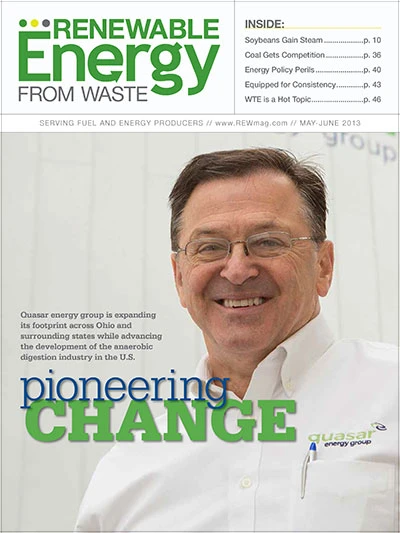 Waste and Recycling Industry Innovation Helps Reduce Greenhouse Gas Emissions
Waste and Recycling Industry Innovation Helps Reduce Greenhouse Gas Emissions
The waste and recycling industry is continuing to reduce its release of greenhouse gases, even as waste volumes increase, according to the latest greenhouse gas inventory released by U.S. Environmental Protection Agency (EPA).
“Our industry has been diligent and has invested in new equipment and facilities to reduce emissions of methane and other gases from landfills,” says Environmental Industry Associations (EIA) President and CEO Sharon H. Kneiss. “Furthermore, we have turned potential emissions into an important energy source. We are environmentalists in every sense of the word. The many companies responsible for this reduction should be proud of this accomplishment.”
The U.S. landfills 6 percent less than it did 20 years ago, but methane emissions have declined by 30 percent during the same period. This has happened as a result of converting more methane to energy and improved flaring of methane emissions and oxidation techniques, according to Kneiss.
There are 594 landfill gas-to-energy sites in the United States that generate an average of 1,813 megawatts (MW) of energy and 312 million standard cubic feet per day of gas. This is enough energy to directly power 1 million homes and to heat 729,000 homes, according to the EIA.
Methane gas collected at landfills is used to power homes, businesses and government facilities across the nation. Some of it also is used to fuel garbage and recycling trucks. Landfill-gas-to-energy projects and other forms of biomass-derived energy make up almost half of the nation’s renewable energy supply—almost the same amount as is derived from solar, wind, geothermal and hydropower combined, according to the EPA.
Landfills are the third-highest producer of anthropogenic methane in the United States. Natural gas recovery and ruminant animals, such as cows, produce more methane emissions than landfills. The gases generated in 2011 from landfills, composting and incineration were equivalent to approximately 122 million tons of carbon dioxide.
More information is available at www.epa.gov/climatechange/ghgemissions.
 New Video Showcases Results of Refuse-Derived Fuel Study
New Video Showcases Results of Refuse-Derived Fuel Study
The Webber Energy Group at the University of Texas, Austin, has released a new video on a project that converted residue from material recovery facilities (MRFs) into a viable form of solid recovery fuel.
The video, viewable at www.REWmag.com/webber-energy-u-t-austin-srf-fuel-video.aspx, shows how the Webber Energy Group used residues from MRFs to create solid recovery fuel (SRF) pellets. The pellets are made from 60 percent MRF residue and 40 percent postindustrial waste. In the video, viewers will see how SRF created energy, reduced carbon emissions and reduced coal use in a cement kiln. The SRF comprises 60 percent plastics and 40 percent paper.
At present, MRFs send an estimated 5 to 15 percent of what they collect to landfills. Much of this material is energy-rich plastic and paper that could be used in fuel applications such as SRF.
A study corresponding to the findings of the research was developed in conjunction with the American Chemistry Council and is available at http://plastics.americanchemistry.com/Sustainability-Recycling/Energy-Recovery/Residue-Derived-Solid-Recovered-Fuel-for-Use-in-Cement-Kilns.pdf. It was the focus of a feature story in the Fall 2012 issue of Renewable Energy from Waste titled “From Trash to Treasure.”

Explore the June 2013 Issue
Check out more from this issue and find your next story to read.
Latest from Waste Today
- Louisiana city launches glass recycling program
- City eWaste, Williamson County, Tennessee, offer electronics recycling stations
- Casella commits $1.5M to launch circular economy center at the University of Vermont
- Mavitec Green Energy expands in US market
- Eagle Dumpster Rental identifies its MRF-unfriendly items
- American Securities acquires Integrated Global Services Inc.
- Fleetio integrates Maintenance Shop Network add-in
- 3rd Eye expands suite of fleet safety solutions





